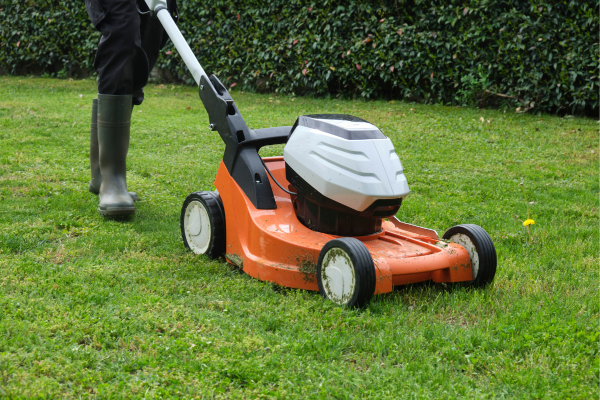Your cart is currently empty!

18 Sep How To Prevent Chinch Bug Infestations: Tips For A Healthy Lawn
Maintaining a healthy and vibrant lawn requires dedication and effort, but the rewards of a lush green carpet under your feet are well worth it. However, one common threat that can wreak havoc on your lawn is the chinch bug (Blissus spp.). These tiny insects may be small, but their impact on your turfgrass can be significant if left unchecked. To protect your lawn from chinch bug infestations and ensure its continued health, prevention is the key. In this article, we will explore effective tips to prevent chinch bug infestations and maintain a thriving and resilient lawn.
1. Promote Lawn Health
A healthy lawn is the first line of defence against chinch bugs and many other lawn pests. Follow these lawn care practices to promote its overall well-being:
- Proper Mowing: Mow your lawn at the recommended height for your specific grass type. Avoid cutting more than one-third of the grass height at a time, as excessively short grass is more susceptible to stress and pest damage.
- Adequate Watering: Water your lawn deeply and infrequently to encourage deep root growth. Avoid frequent light watering, as it can lead to shallow root systems and make your lawn more susceptible to drought stress and chinch bug infestations.
- Fertilization: Feed your lawn with appropriate fertilizers to provide it with essential nutrients. However, be cautious not to over-fertilize, as excessive nitrogen can attract chinch bugs and other pests.
- Aeration: Periodically aerate your lawn to reduce soil compaction and improve water and nutrient penetration. This will help your grassroots grow robust.
2. Monitor Chinch Bug Activity
Vigilance is key to early detection and prevention of chinch bug infestations. Regularly inspect your lawn for signs of chinch bug activity, especially during the warmer months when they are most active. Look out for yellowing or browning patches of grass, particularly in sunny areas. Conducting a simple float test using a metal can or plastic container can also help you identify the presence of chinch bugs in your lawn.
3. Reduce Excessive Thatch
Thatch is the layer of dead grass and organic debris that accumulates between the grass blades and the soil surface. Excessive thatch can provide shelter and protection for chinch bugs and other pests. Periodically dethatch your lawn to maintain a healthy thatch layer (approximately ½ inch) and discourage chinch bug habitation.
4. Minimize Moisture Attraction
Chinch bugs are attracted to moist and shady areas, so reducing excessive moisture in your lawn can make it less appealing to these pests. Avoid overwatering your lawn and ensure proper drainage to prevent waterlogged conditions. Address any areas where water tends to accumulate or remain for extended periods.
5. Create Physical Barriers
To protect vulnerable plants or seedlings from chinch bug feeding, create physical barriers around them. Row covers or insect netting can be effective in keeping chinch bugs at bay while allowing sunlight and air to reach your plants.
6. Encourage Natural Predators
Promote biodiversity in your garden to encourage the presence of natural predators that feed on chinch bugs. Birds, such as robins and blackbirds, as well as ground beetles and spiders, are known to consume chinch bugs and help control their populations.
7. Use Nematodes For Natural Control
Beneficial nematodes are microscopic worms that can be applied to your lawn to naturally control chinch bug populations. Nematodes seek out and infect chinch bug larvae, effectively reducing their numbers. Visit our website to check out our Nema Globe Grub Busters.
8. Consider Resistant Grass Varieties
When planning to establish or reseed your lawn, consider using grass varieties that are less susceptible to chinch bug infestations. Some grasses, such as fine fescue and tall fescue, have shown better resistance to chinch bug feeding.
By adopting these preventive measures and maintaining a proactive approach to lawn care, you can significantly reduce the risk of chinch bug infestations and keep your lawn lush, green, and thriving. Prevention is not only more environmentally friendly but also more cost-effective than dealing with extensive damage caused by chinch bugs. With dedication and care, you can create a beautiful and healthy lawn that becomes the envy of the neighbourhood.
Take control of your lawn’s health and safeguard it from the threat of chinch bugs with the help of The Environmental Factor’s Nema Globe Flea & Chinch Bug Buster!
Visit our website and explore the Nema Globe Chinch Bug Busters, a powerful solution to combat chinch bugs and other lawn pests. Don’t let chinch bugs disrupt your garden oasis; take preventive action and embrace an eco-friendlier approach to pest control.


